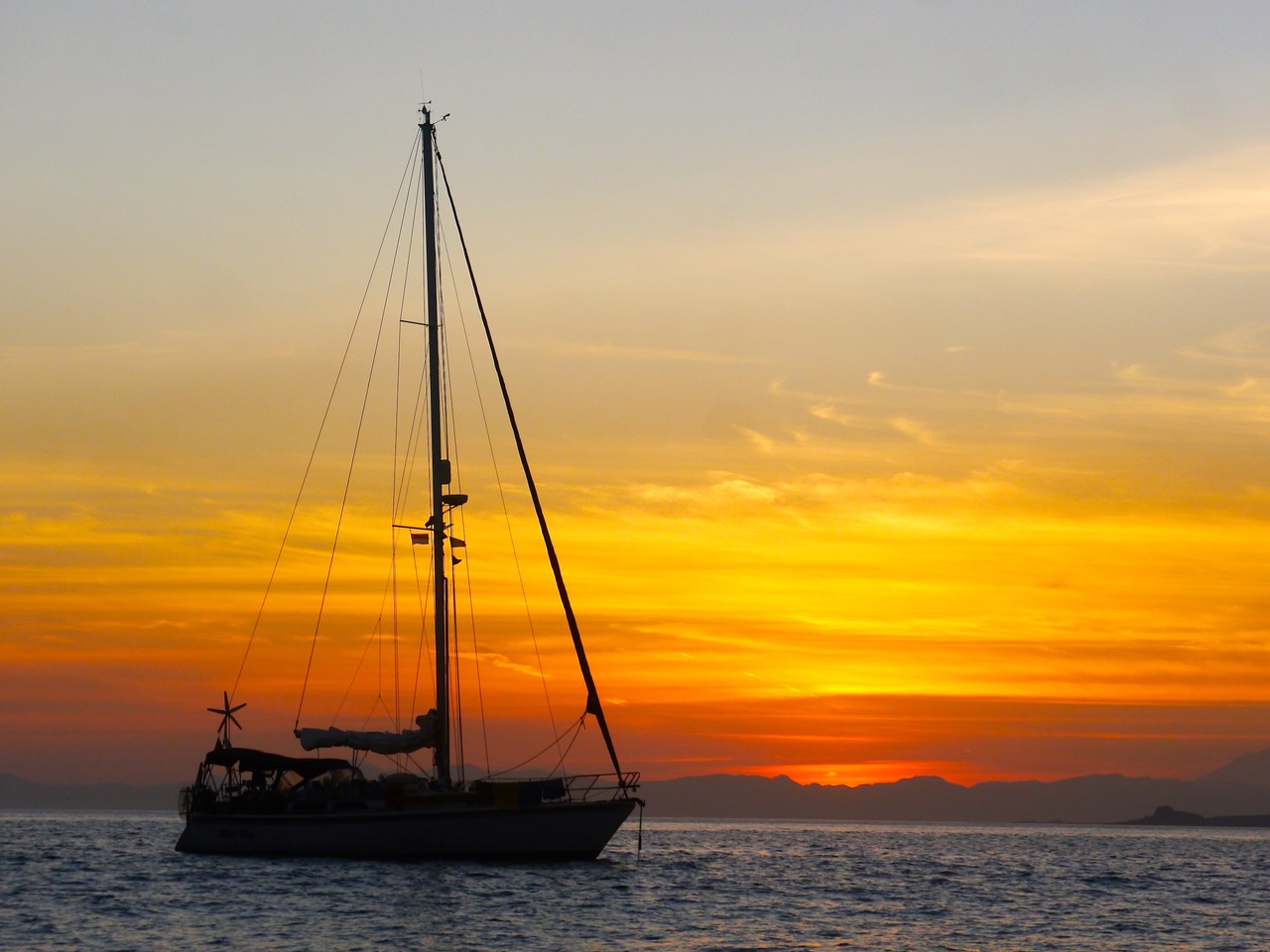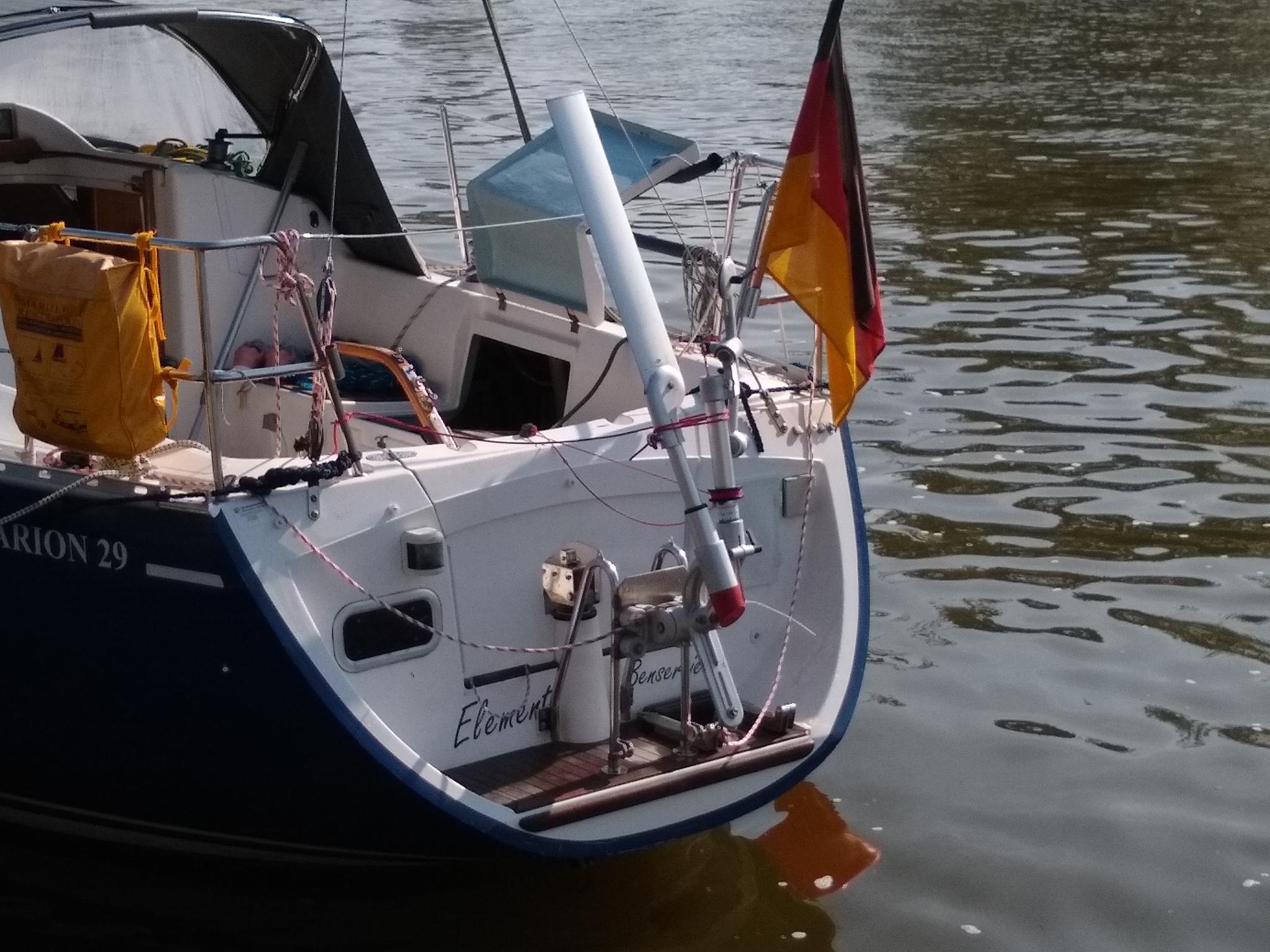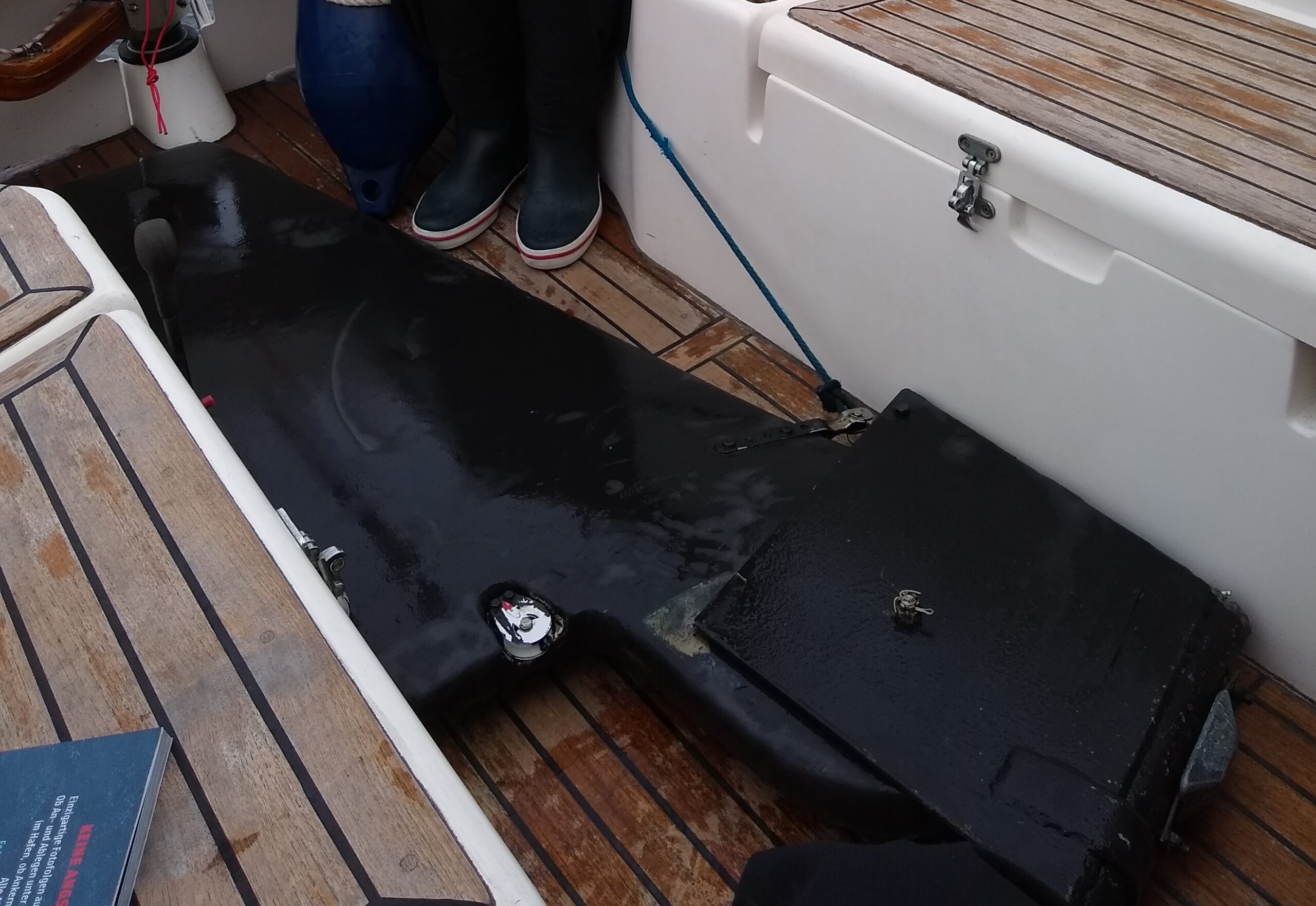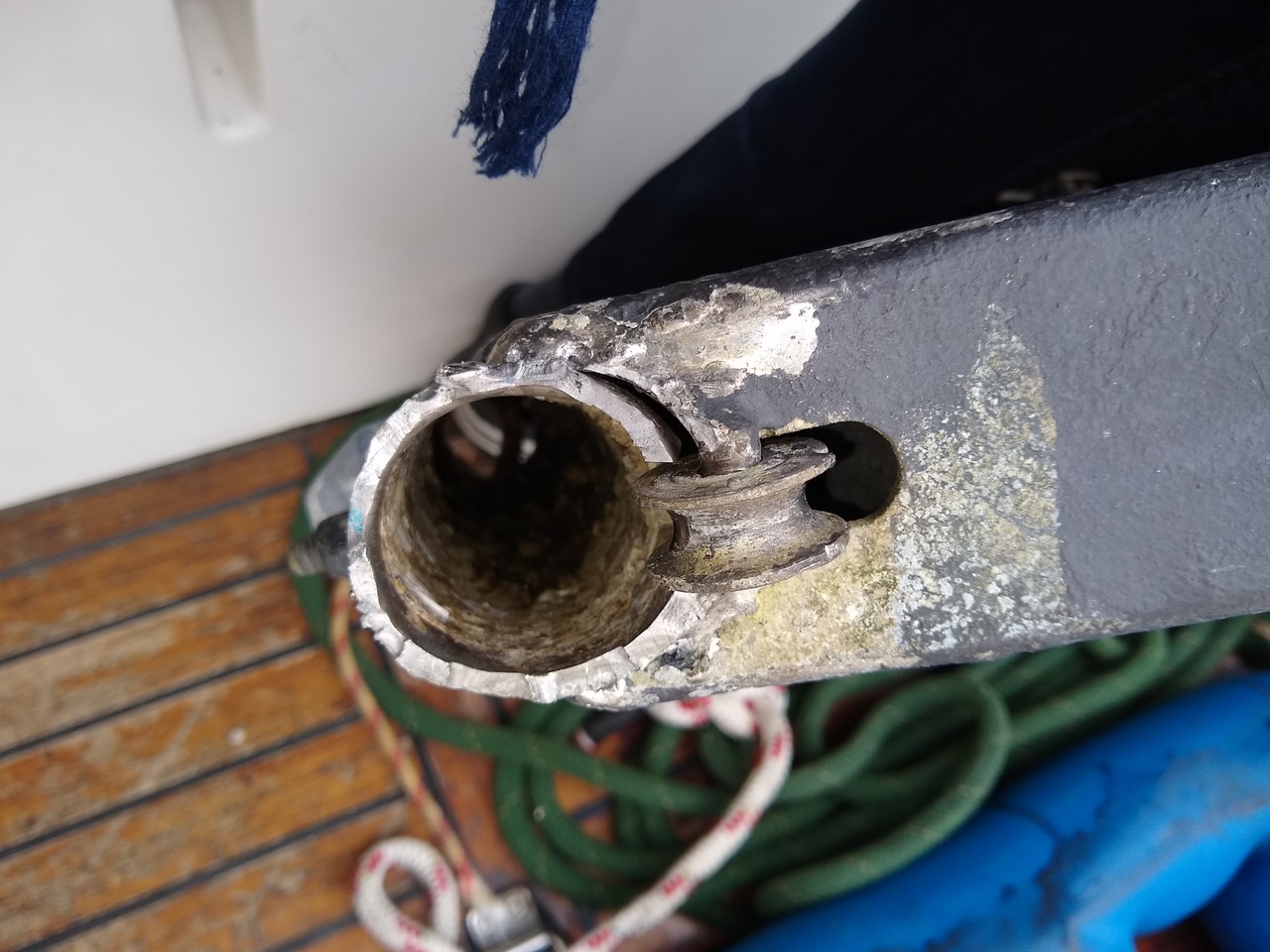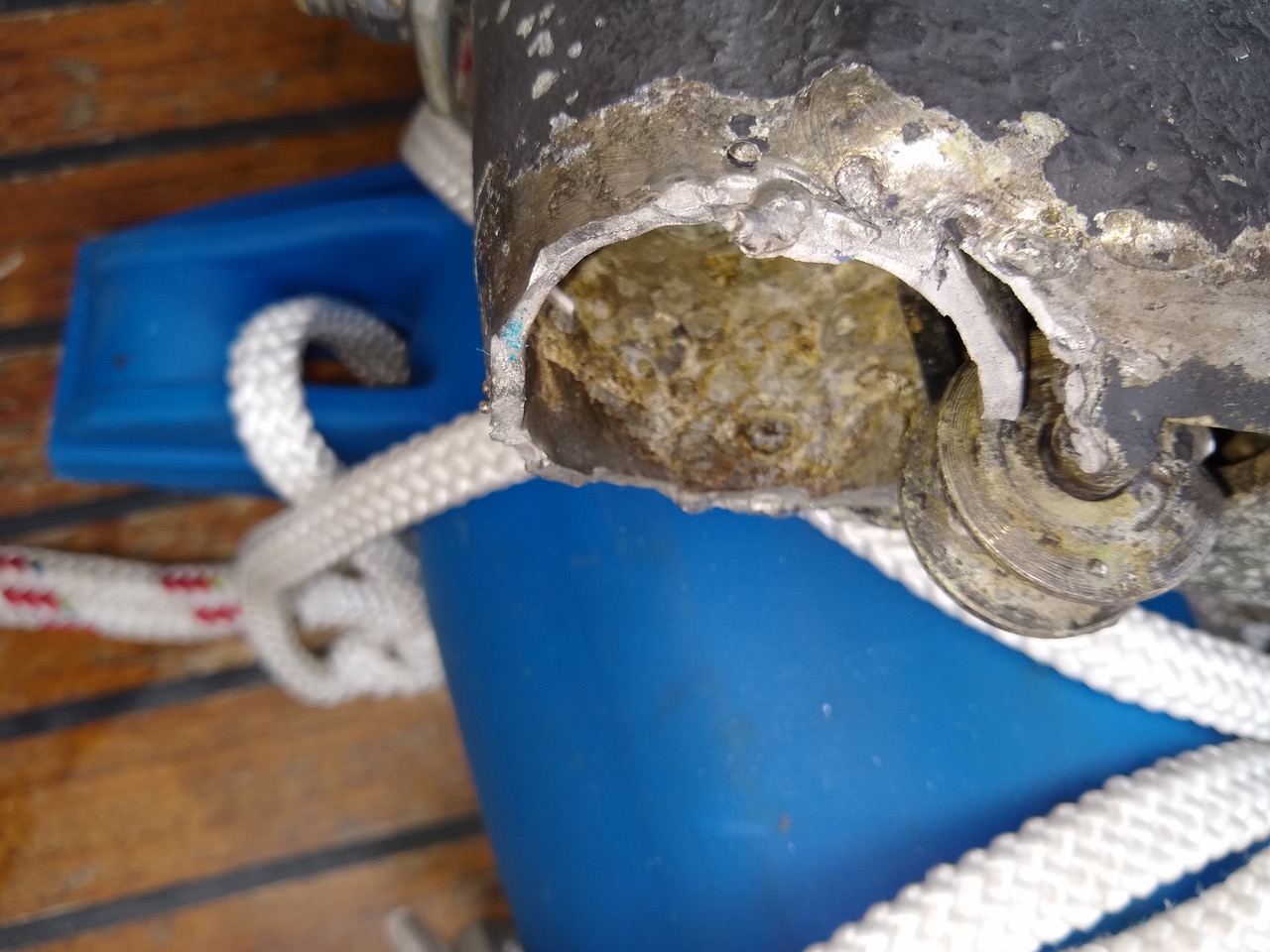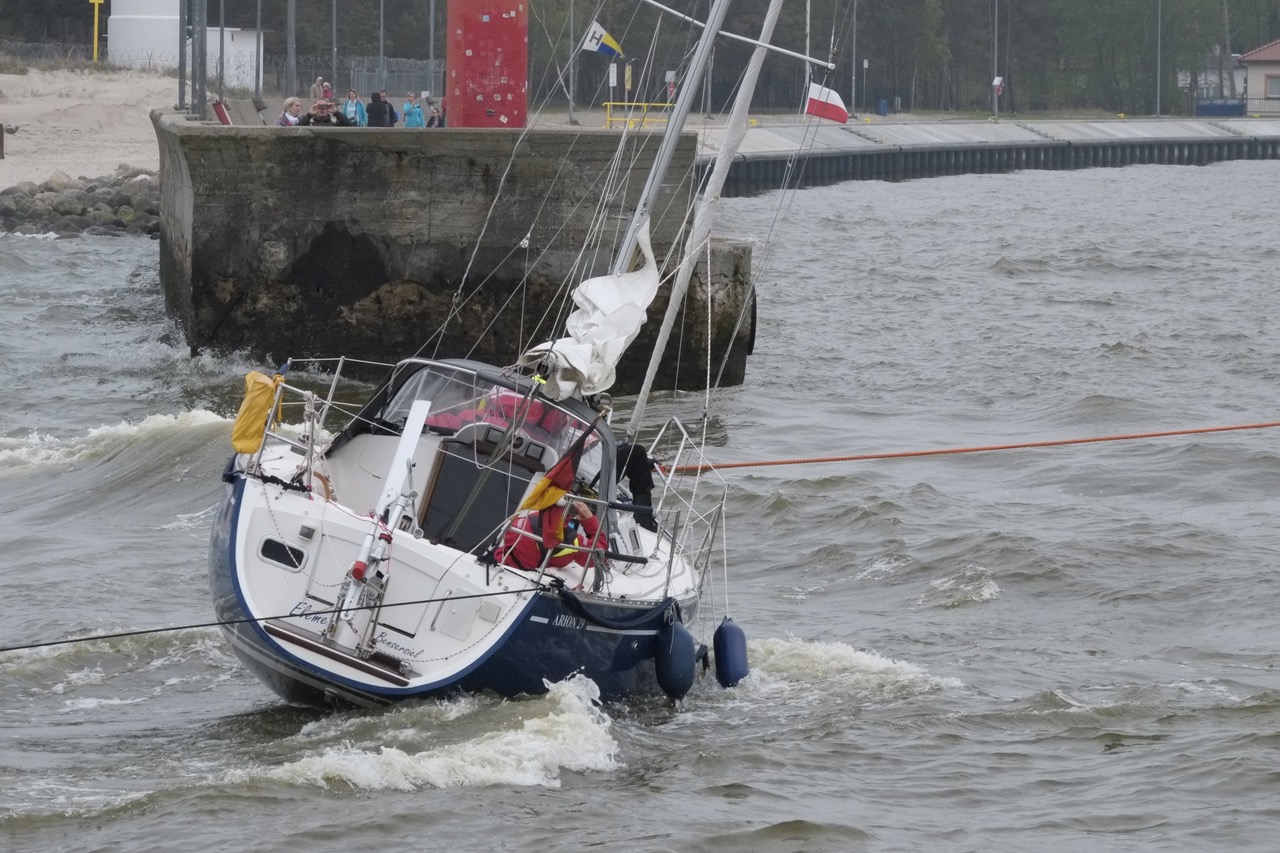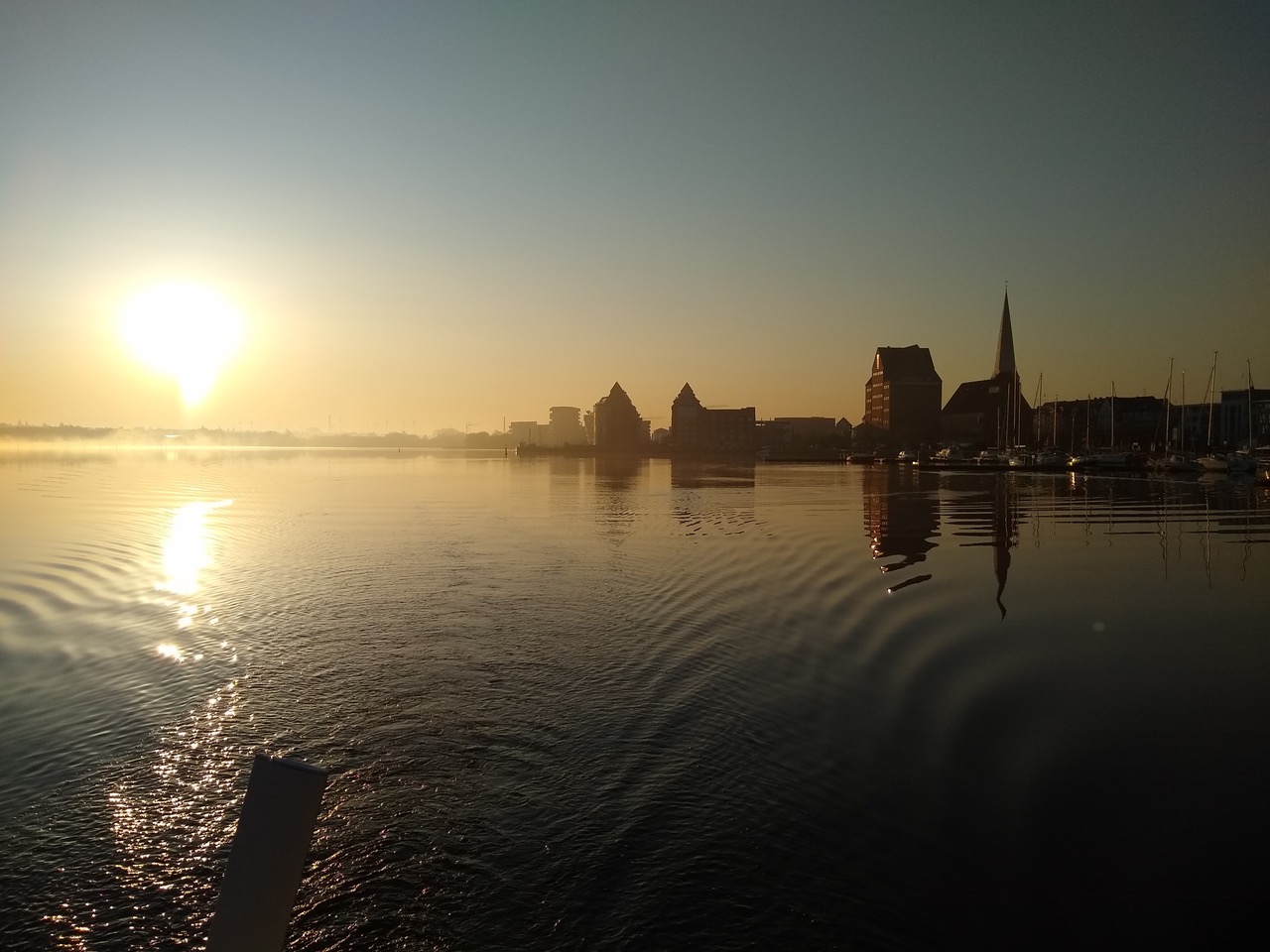INCIDENT # 4 – RUDDER DISABLED BY ORCA ATTACK OFF PORTUGAL
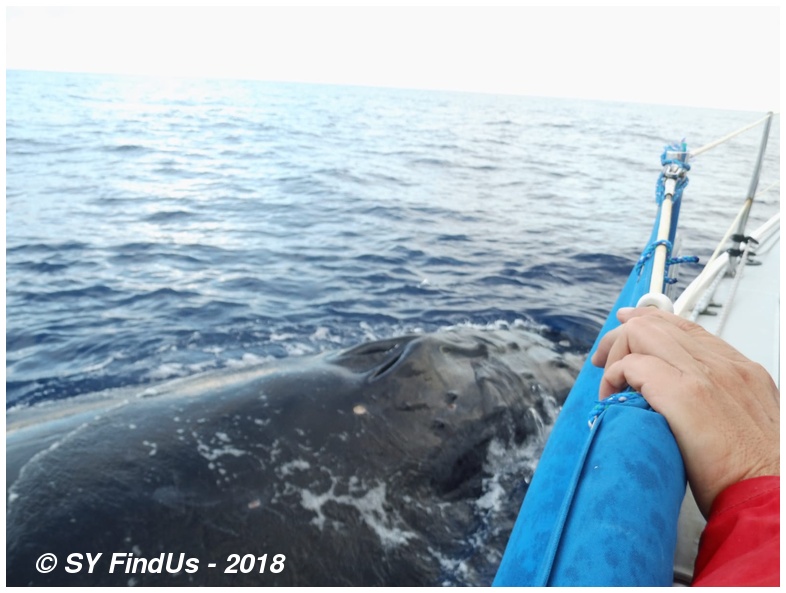 A pod of orcas swimming south of Lisbon on 10th November 2020 discovered a new game. The German-flagged Comfortina 32 “Be Atitas” was proceeding under Windpilot close to the coast when the black-and-white attackers commenced hostilities, seriously damaging the boat. Having lost the use of its rudder, the boat was unable to continue independently and had to be helped in by the Policia Maritima.
A pod of orcas swimming south of Lisbon on 10th November 2020 discovered a new game. The German-flagged Comfortina 32 “Be Atitas” was proceeding under Windpilot close to the coast when the black-and-white attackers commenced hostilities, seriously damaging the boat. Having lost the use of its rudder, the boat was unable to continue independently and had to be helped in by the Policia Maritima.
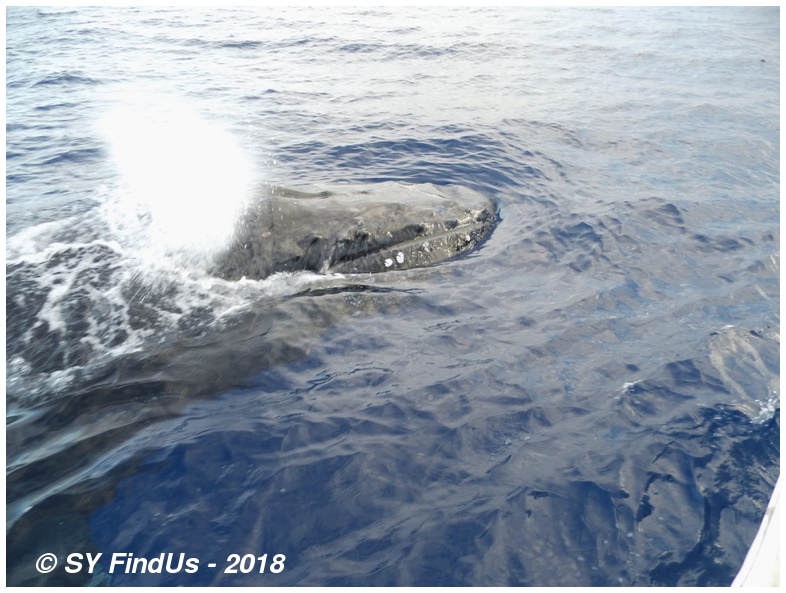 Here is what solo skipper Jan Lüdeker had to say:
Here is what solo skipper Jan Lüdeker had to say:
“Hi Peter! Here is my response to your questions. The boat and I are in Sines – not ideal but we had to get towed in. Everyone’s very friendly here and they all speak fluent English. I can’t say the same of myself: I have some catching up to do there.”
“The rudder was repaired in Cascais and reinstalled. A very good company, although too soon to judge on quality. I had help from two other sailors who were there at the same time.
My boat went back in the water on Friday 27 November 2020 and we intend to head off into the Algarve with all three boats together on Tuesday or Wednesday, keeping close to the coast.
Here are a couple more photos and the video from the police. I sent a pan pan and they did the first filming. They were great and towed me 11 nautical miles.
Best wishes,
Jan”
continue

credit Jan Lüdeker






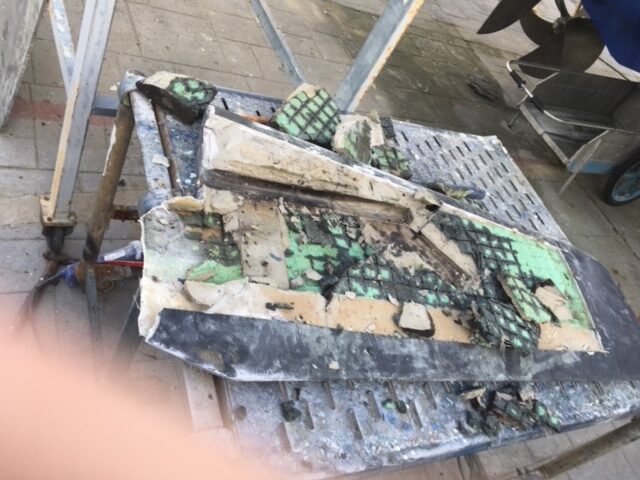



The following video shows a Lagoon 450 under attack. Here too the rudder was damaged.
FAZIT
The damage to the rudder made it impractical to tow the Comfortina, so it was instead tied alongside a RIB with a powerful outboard and brought in that way.
28 November 2020
Peter Foerthmann

FLYING FISH
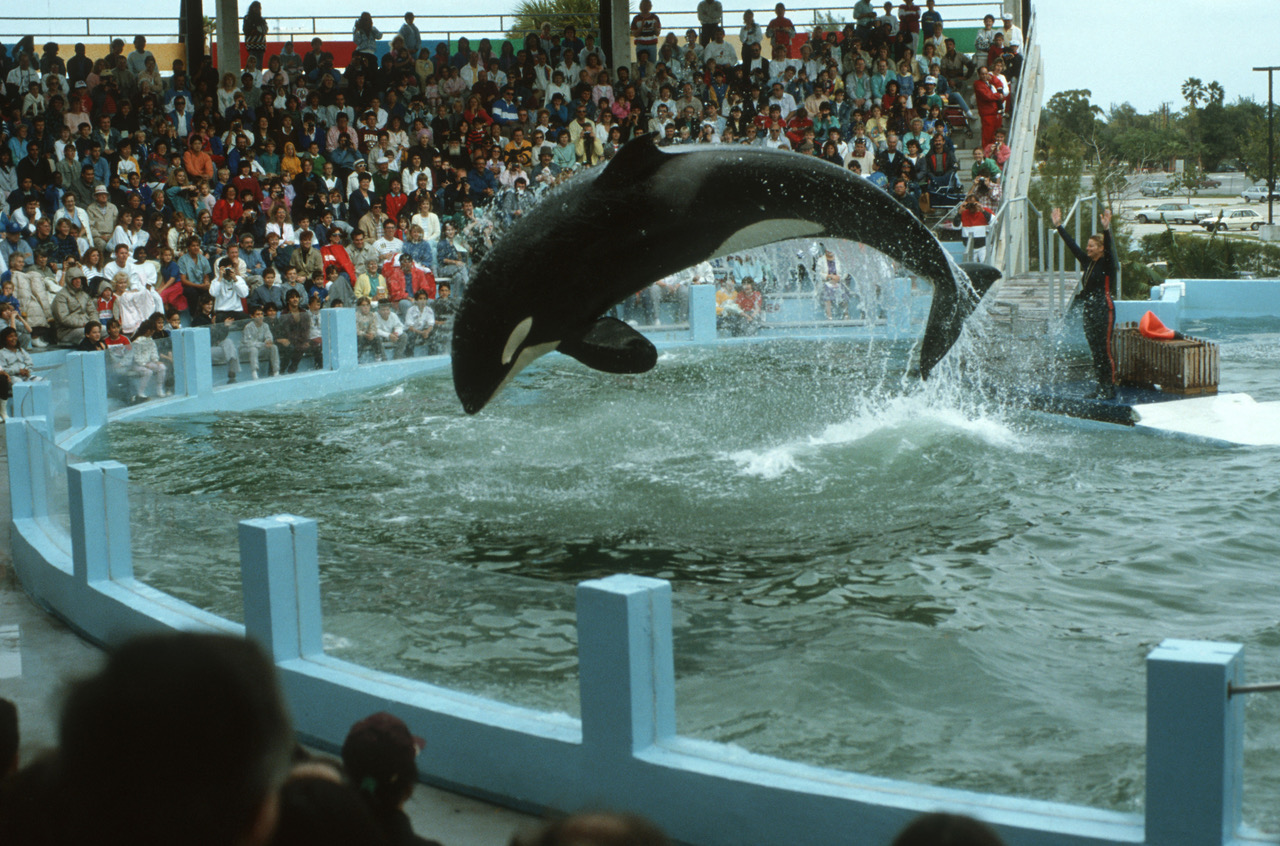 Sea creatures can be fun and exciting to watch, especially those that, large or small, have the ability launch themselves into the air. Some even still do it in captivity for a “trainer”. I’ve always wondered if maybe they just enjoy soaking the unfortunates in the front few rows who didn’t think hard enough about what the “Splash area” signs mean. Everybody certainly understands what they mean by the end of the show. Watching their faces as the first wall of water hits is probably worth the ticket price on its own.
Sea creatures can be fun and exciting to watch, especially those that, large or small, have the ability launch themselves into the air. Some even still do it in captivity for a “trainer”. I’ve always wondered if maybe they just enjoy soaking the unfortunates in the front few rows who didn’t think hard enough about what the “Splash area” signs mean. Everybody certainly understands what they mean by the end of the show. Watching their faces as the first wall of water hits is probably worth the ticket price on its own.
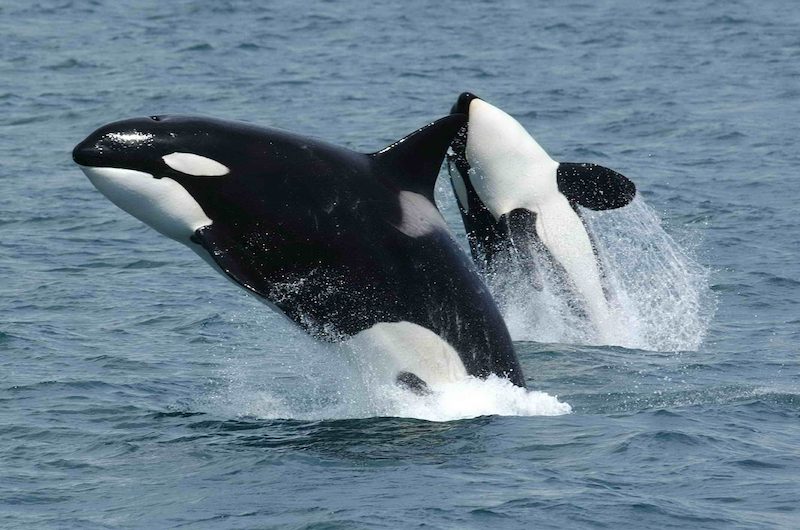
credit Charles Doane
Wir sind wirklich leicht irritiert, weil wir noch nicht haben erkennen können, welcher unsichtbaren Software diese Jäger folgen. Vielleicht folgen die Fische einer App, oder haben sie gar einen Audio Chip? Wir werden das garantiert noch weiter untersuchen. Vorerst jedenfalls fassen wir zusammen und bezeichnen die Orca´s respektvoll als hochintelligent! Darin schwingt bereits das Wissen, dass wir die Schemata sicher knacken werden, weil dem homo sapiens auf Dauer nix verborgen bleibt – was nicht sein kann, dass darf es nicht! Schon garnicht bei einem Fisch!
We have grown somewhat irritated at our inability to detect the invisible software that governs these supreme predators. Perhaps the giants have their own app? Or an audio chip implant? No doubt we will be looking into this more in the future. For the time being though we will have to content ourselves with the – respectfully made – general observation that they are “highly intelligent”. Implicit in that statement of course is the assumption that we are more intelligent still and will surely crack their secret sooner or later because ultimately (we assume) nothing can be concealed from homo sapiens for long. And especially not by sea life. Recently though the orcas have revealed a new and unexpected trick that has captured media attention like no other. Suddenly they seem to have noticed us – or perhaps the stress of pretending to ignore us has become unbearable. The rumour mill is churning at full speed and the experts are lining up to have their say. Do they just want to play? Is it curiosity? Family trauma? Some other random factor we haven’t managed to pick up on yet? Have these giant fishes (OK, I know they’re really mammals) all at once begun to mistake sailing boats for other orcas swimming upside down with their dorsal fin playfully – and irresistibly – wiggling just below the surface? Or might it be their equivalent of (or revenge for) the shark fin soup popular among humans in some parts of the world?
Whatever the reason, sailors have noticed and are not amused! Do we not have enough to think about already? First coronavirus and now orcas off La Coruña as well! Are we going to need to arm – or armour – our boats to avoid having to call the SAR helo on a regular basis as we seek to save body and soul at least from our tooth-marked wrecks? What will the insurance companies think of that?
What we might want to do, now I come to think of it, is revisit our assessment of what makes a good rudder. This, as it happens, is one of my favourite subjects and I have definite views on the matter: a good rudder is tough, made from the right material and robustly mounted on three bearings behind a protective keel. A rudder like that brings peace of mind as well as steering the boat. For even more peace of mind, that rudder should be attached to a metal hull so that exceptional events animal, vegetable or mineral are more likely to end in “an experience” rather than a disaster.
Charles Doane, skipper of the US-flagged yacht Lunacy, puts it very well in his Charles Doane Skipper der US Yacht LUNACY Blog:
Sept. 14/2020: I’m surprised it has taken this long. The species Orcinus orca, popularly known as killer whales, the largest of oceanic dolphins, have decided they are mad as hell and aren’t going to take it anymore. Since July orcas have made a number of organized attacks against sailing vessels off the Spanish coast, repeatedly ramming boats, chewing on keels, and crippling rudders.
31.10.2020
Peter Foerthmann

INCIDENT # 3 – BROKEN RUDDER IN THE NORTH ATLANTIC
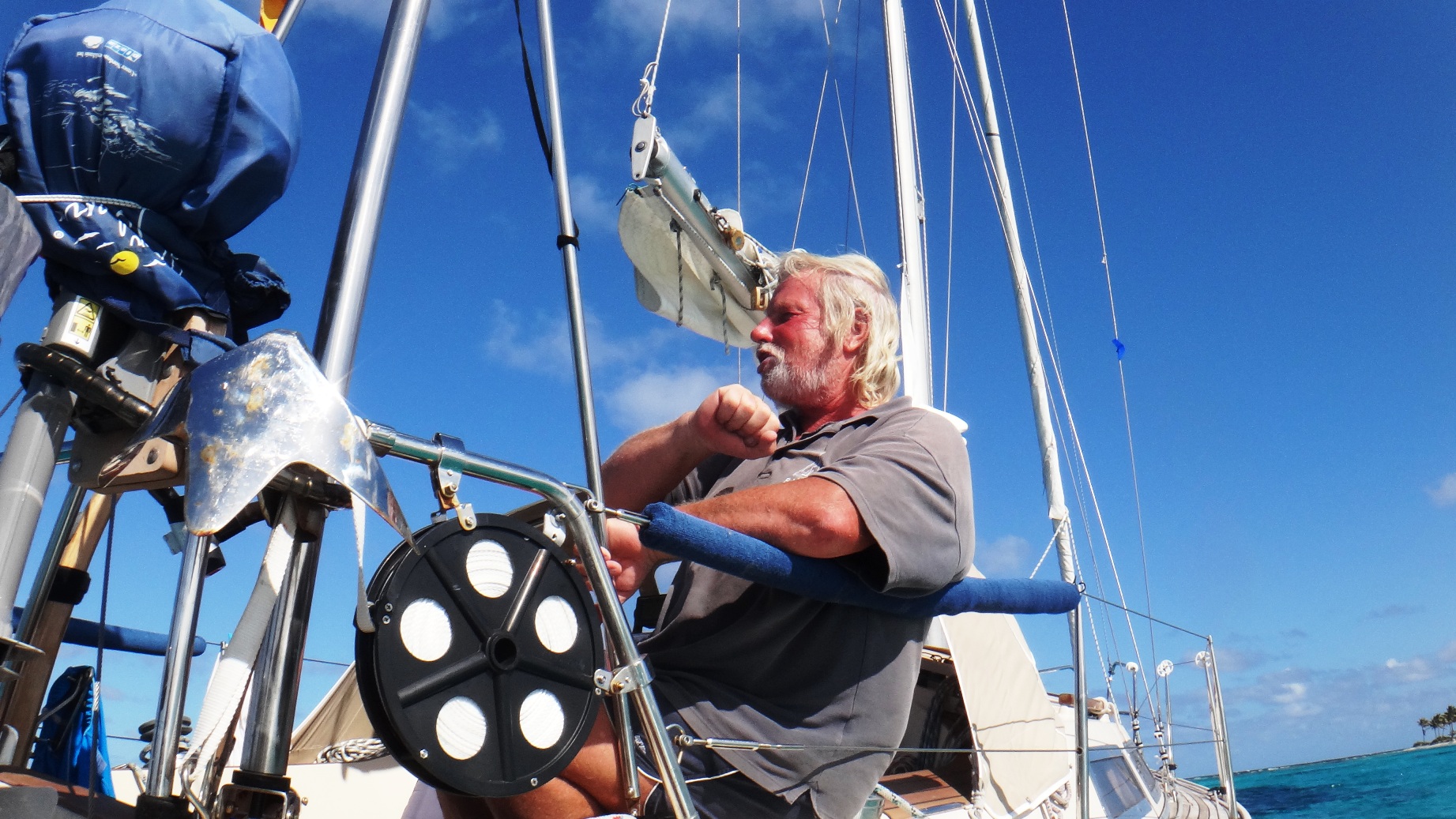 German single-hander Peter Bartel was halfway across the Atlantic on his way back to Europe in 2016 when a drifting oil barrel removed his main rudder.
German single-hander Peter Bartel was halfway across the Atlantic on his way back to Europe in 2016 when a drifting oil barrel removed his main rudder.
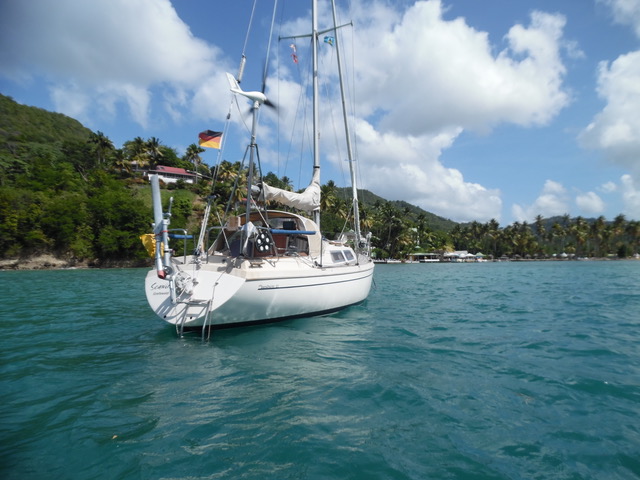
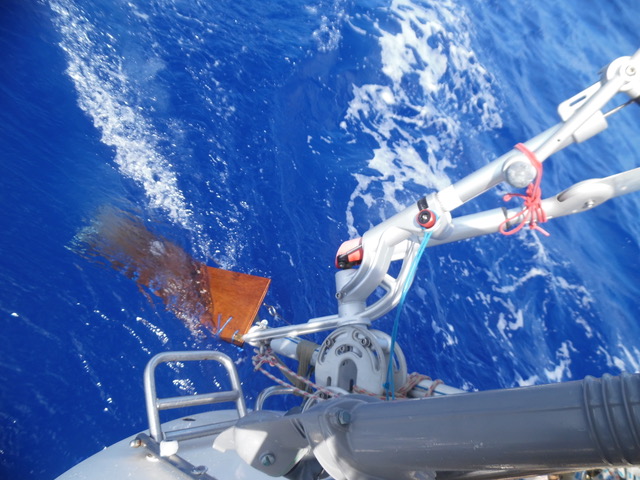
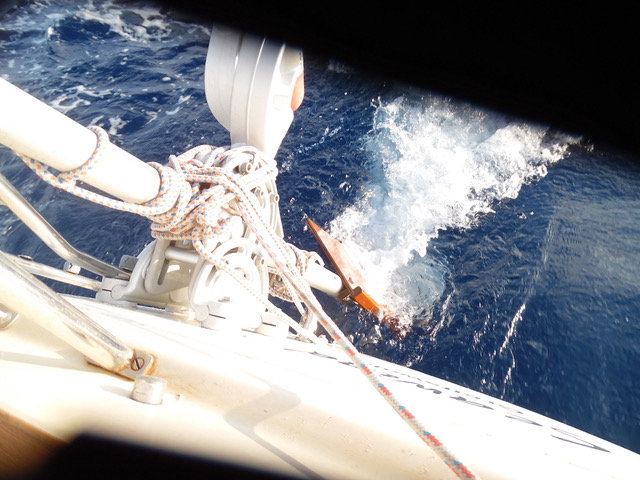
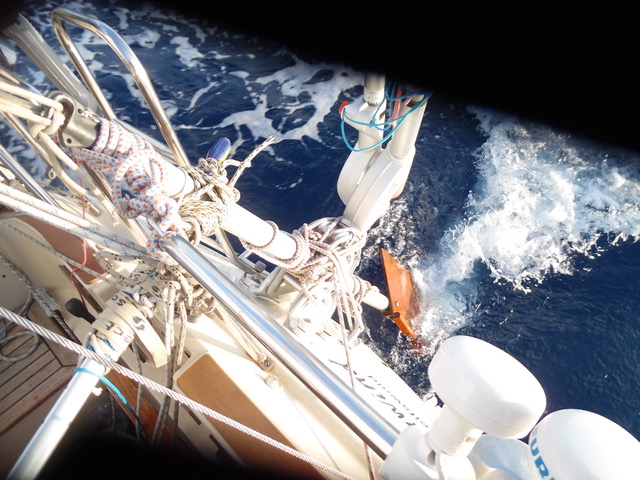 Fortunately, he had the ingenuity and skill (and the tools and materials) to jury-rig a replacement and reach the Azores, but the incident could just as easily have ended in an international rescue operation. The Bandholm 27 is a comparatively robust boat, but apparently it has a chink in its armour. Only the upper part of the rudder shaft (between the middle and top bearings) was solid; the lower part (from the middle bearing down to the bottom bearing on the skeg) was just a tube.
Fortunately, he had the ingenuity and skill (and the tools and materials) to jury-rig a replacement and reach the Azores, but the incident could just as easily have ended in an international rescue operation. The Bandholm 27 is a comparatively robust boat, but apparently it has a chink in its armour. Only the upper part of the rudder shaft (between the middle and top bearings) was solid; the lower part (from the middle bearing down to the bottom bearing on the skeg) was just a tube.
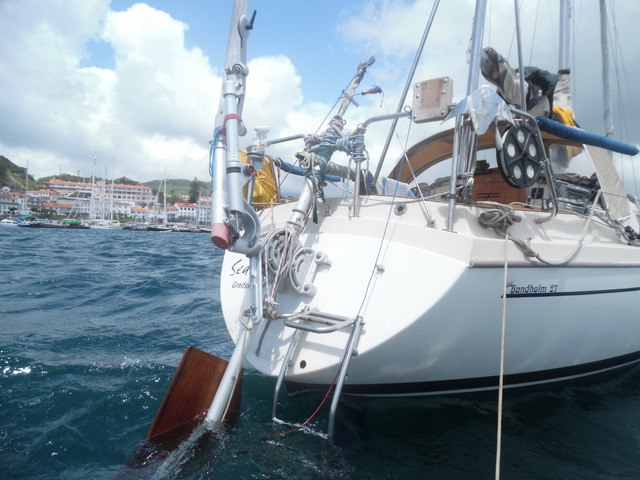
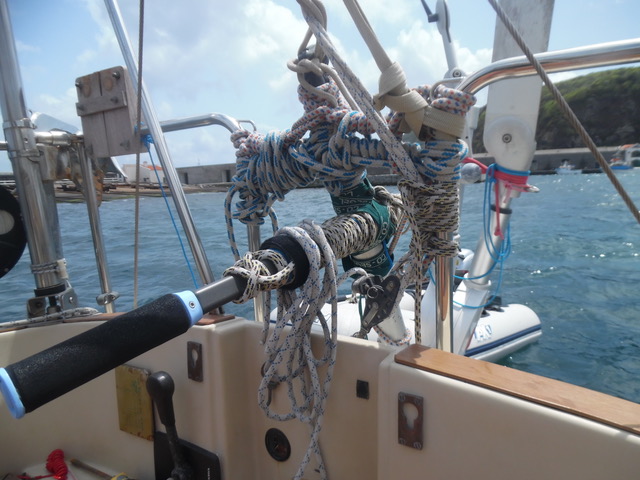 His home and workshop bouncing around uncontrollably on a lively ocean swell, Peter set to work fashioning an impressively large emergency rudder from his spinnaker pole, the saloon table and whatever else he had to hand. This contraption he then mounted on the bottom swim ladder fitting and the Windpilot bracket with lines and sail ties before sailing the remaining 800 nautical miles to Horta. A clip of the system in action shows the boat yawing all over the place despite the generously proportioned – for a temporary solution – emergency rudder. A much cut-down headsail as the sole source of drive helped to stabilise the course.
His home and workshop bouncing around uncontrollably on a lively ocean swell, Peter set to work fashioning an impressively large emergency rudder from his spinnaker pole, the saloon table and whatever else he had to hand. This contraption he then mounted on the bottom swim ladder fitting and the Windpilot bracket with lines and sail ties before sailing the remaining 800 nautical miles to Horta. A clip of the system in action shows the boat yawing all over the place despite the generously proportioned – for a temporary solution – emergency rudder. A much cut-down headsail as the sole source of drive helped to stabilise the course.
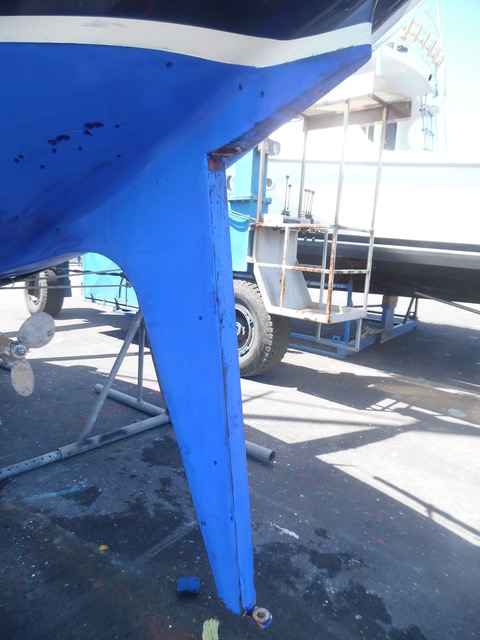
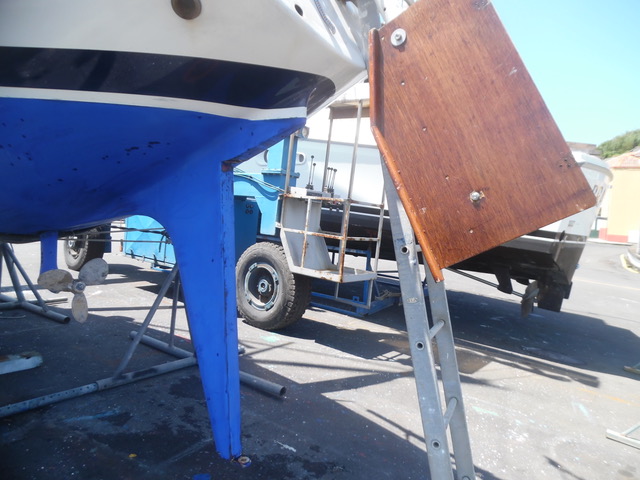
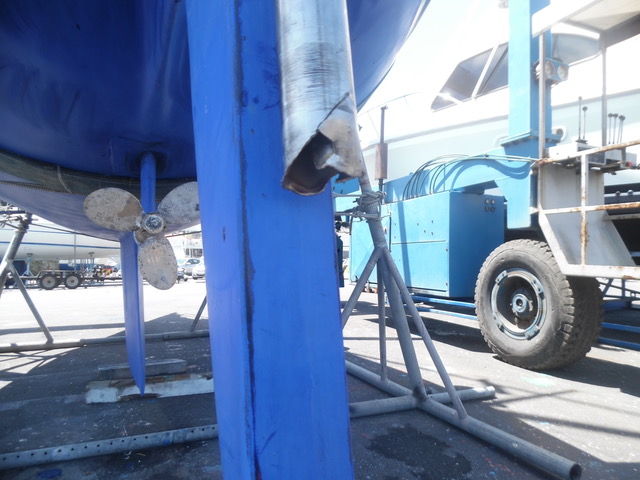 These impressive photos tell a tale of remarkable seamanship the like of which I have very rarely seen. Peter was a picture of serenity as he explained to me back here in Hamburg that he had simply done the only thing he could do in the circumstances.
These impressive photos tell a tale of remarkable seamanship the like of which I have very rarely seen. Peter was a picture of serenity as he explained to me back here in Hamburg that he had simply done the only thing he could do in the circumstances.
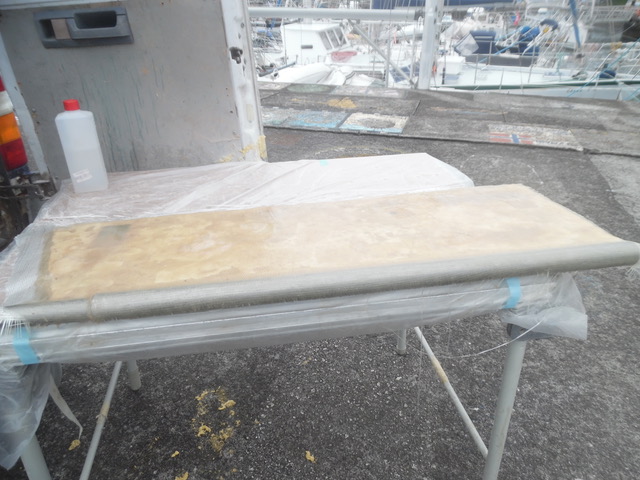
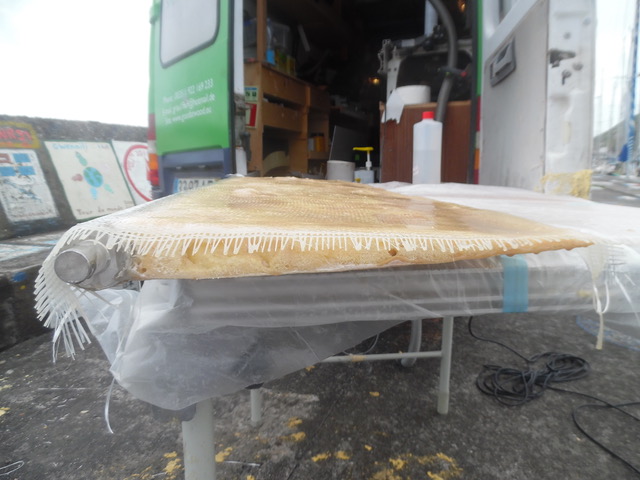
Peter was at least able to enjoy the last leg of his trip home thanks to the strong new rudder built and fitted for him by Harry Schank and the team atGOOD AT WOOD in Horta.
FAZIT
Rudder loss on a fin-keeler, as these two examples demonstrate, can have dramatic consequences because the missing lateral surface area below the waterline makes it almost impossible to maintain a steady course even with the most modest of sail plans. I know from accounts of rudder damage shared by users of my old Atlantik series auxiliary rudder systems that auxiliary rudders of that type can only provide reasonable steering if all the lateral surface area of the defunct main rudder is still present (see incident # 2 – Blue Sky).
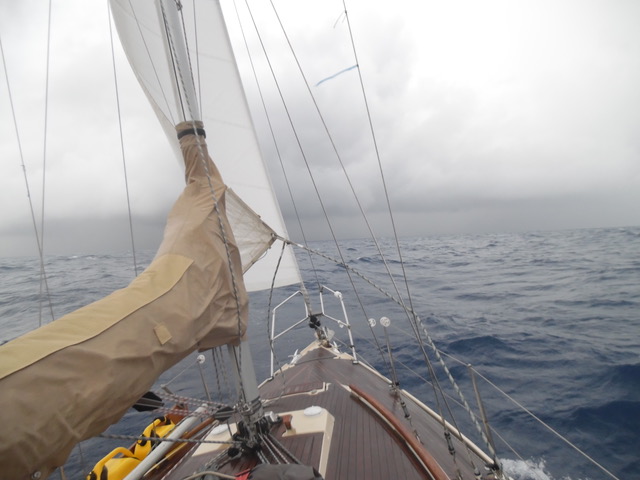 A dedicated emergency rudder of a sufficient size (which probably means one with at least half the surface area of the main rudder) is required if the main rudder is lost entirely. Note that almost all auxiliary rudder systems have a surface area equal to around 30 % of the effective surface area of the main rudder and that all of them are designed to operate with the main rudder in place and trimmed to balance the boat. Any auxiliary rudder will be hard-pressed to keep the boat on track in an emergency with no main rudder.
A dedicated emergency rudder of a sufficient size (which probably means one with at least half the surface area of the main rudder) is required if the main rudder is lost entirely. Note that almost all auxiliary rudder systems have a surface area equal to around 30 % of the effective surface area of the main rudder and that all of them are designed to operate with the main rudder in place and trimmed to balance the boat. Any auxiliary rudder will be hard-pressed to keep the boat on track in an emergency with no main rudder.

INCIDENT # 2 – EMERGENCY RUDDER REQUIRED
SV Blue Sky – Tino Schumann GER
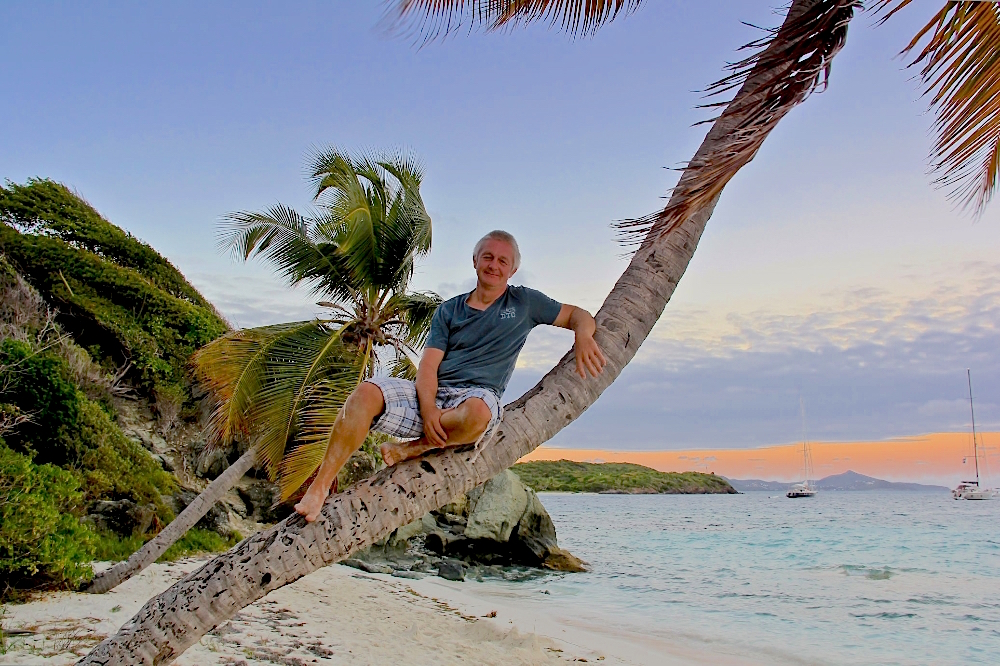 Tino spent nine years exploring all the corners and moods of the world that interested him and for all that time Blue Sky was his home and steed. His wonderful photos reveal a man with a special eye for beauty and inspiration above and below the water (his spectacular works of art adorn many of my blogs).
Tino spent nine years exploring all the corners and moods of the world that interested him and for all that time Blue Sky was his home and steed. His wonderful photos reveal a man with a special eye for beauty and inspiration above and below the water (his spectacular works of art adorn many of my blogs).
 Blue Sky’s was a voyage of two halves interrupted by a two-year break in Malaysia to allow time for recovery and realignment after crew disharmony below decks led to a parting of the ways. The boat went back in the water in 2017 ready for the long trip home.
Blue Sky’s was a voyage of two halves interrupted by a two-year break in Malaysia to allow time for recovery and realignment after crew disharmony below decks led to a parting of the ways. The boat went back in the water in 2017 ready for the long trip home.
 Tino and his new crew did make it all the way back too, in the summer of 2020, although there were times when that happy ending was far from certain.
Tino and his new crew did make it all the way back too, in the summer of 2020, although there were times when that happy ending was far from certain.
 It was early in July 2020 out on the North Atlantic and bad things were happening. The main rudder had jammed in the trunk so that it was no longer possible to move it with the wheel. Shortly after that, probably due to overloading, one of the turning blocks guiding the steering cables to the quadrant ripped out of the laminate. Wave action slammed the rudder over hard to lee and it promptly became wedged against the hull in that position. With wave heights of 3 m and the weather decidedly unfavourable, yacht and crew could easily have found themselves in grave peril had skipper Tino not had an SOS emergency rudder stowed away just in case. Tino takes up the story:
It was early in July 2020 out on the North Atlantic and bad things were happening. The main rudder had jammed in the trunk so that it was no longer possible to move it with the wheel. Shortly after that, probably due to overloading, one of the turning blocks guiding the steering cables to the quadrant ripped out of the laminate. Wave action slammed the rudder over hard to lee and it promptly became wedged against the hull in that position. With wave heights of 3 m and the weather decidedly unfavourable, yacht and crew could easily have found themselves in grave peril had skipper Tino not had an SOS emergency rudder stowed away just in case. Tino takes up the story:
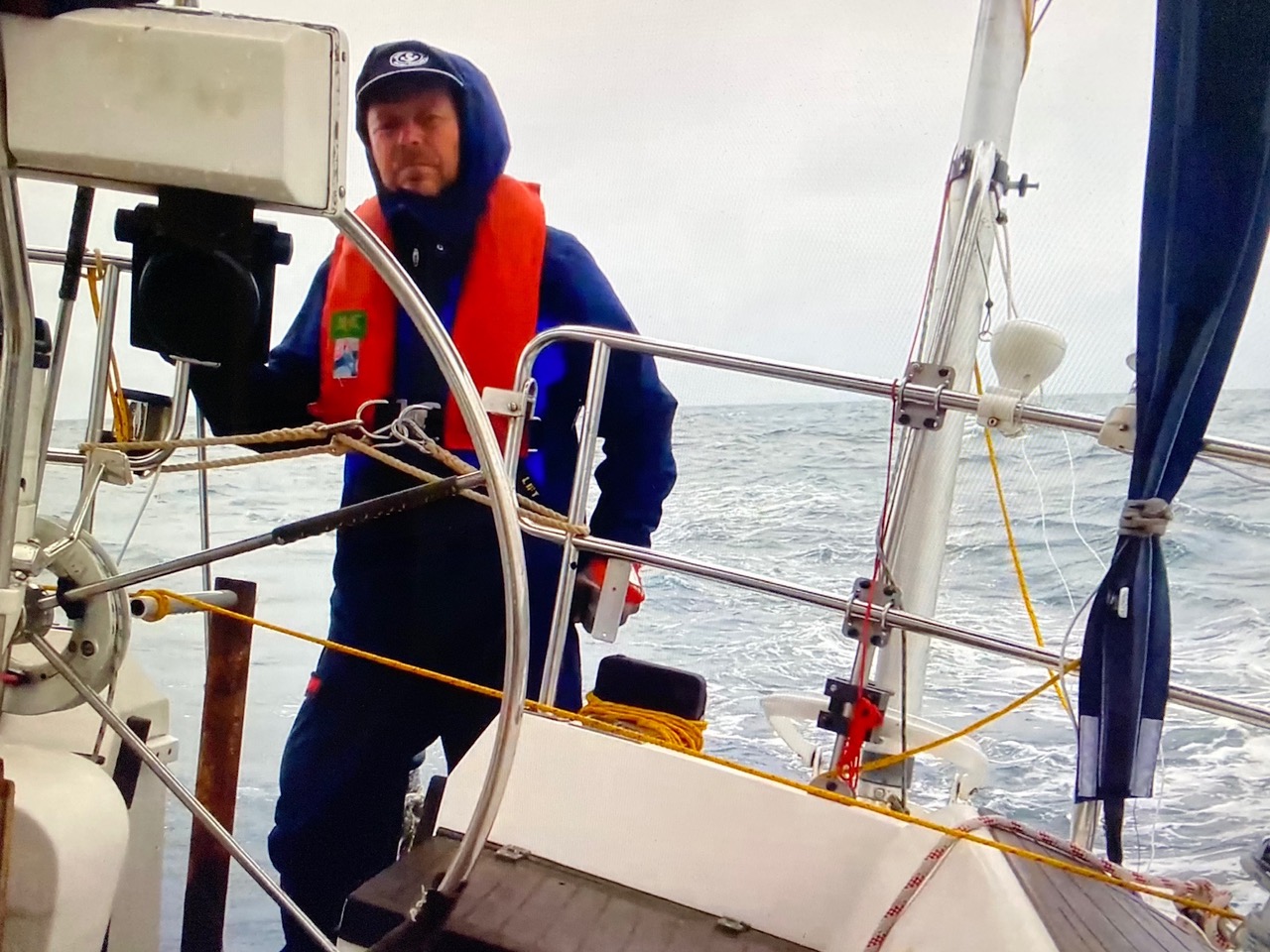
“The rudder blade was absolutely stuck fast hard to port. A quick dive to check things out and see if there might be something fouling the rudder. There was nothing on the rudder. Now it was clear that the rudder shaft was jammed. That meant it would not be possible to steer with the emergency rudder – and the autopilot was obviously out of the question too.”
“We decided to rest up first, going wherever the weather took us while we dreamed of solutions.”
“When we woke up, we found that the waves had shaken the rudder free again, so we quickly lashed it on centreline using ropes connected to the emergency tiller.”
“We then removed the Windpilot Pacific and fitted the SOS emergency rudder on the Pacific’s mountings. All very logical and fairly obvious with a bit of thought – even in 3 m waves with no manual and no great gymnastic ability.”
“We discovered very quickly that good trim is essential. Compensating for the effects of weather helm and the extra wind pressure that can come with being knocked off course by waves is slow and difficult with the small rudder blade. Sometimes even impossible. Extreme movements of the rudder make no sense because they effectively turn steering into braking. A sensitive touch and a great deal of patience turned out to be the key to keeping the boat on track.”
“The whole thing happened on 8 July 2020 around 8 p.m. in position 46°06’7″N, 19°25’2″ W. A long way from help, in other words. We kept ourselves more or less on course using the emergency rudder for the whole of the 693 nm to Cherbourg. So it worked. We were totally exhausted but we made it safely back to land under our own steam.”
“Dear Peter, the photo album is rather meagre. We were too wound up and just not in the right frame of mind for that sort of thing. I’m sending you the few pictures we took. The emergency rudder saved Blue Sky for me, beyond question – it would have been hopeless trying to manoeuvre without it. Thank you for talking me into carrying one.”
FAZIT
This incident probably has its roots in a grounding on a reef in the Pacific in 2018 during which the rudder shaft was bent slightly. It was subsequently straightened over an open flame, which may well have left it permanently weakened.
Luckily the rudder stayed connected to the boat and its lateral surface area remained available to aid steering. Without it, the small auxiliary rudder, which has a surface area of just 0.32 square metres, may well not have been able to save the ship. Take away the effect of a centred main rudder and an auxiliary rudder would probably only be able to provide steering with a greatly reduced sail plan, if at all.
INCIDENT # 1 – MAIN RUDDER LOST
SV Element – Swen-Olaf Teichgräber GER
Let me start with the happy ending: the husband-and-wife crew, who were on sabbatical, completed a very varied summer cruise from Bensersiel on Germany’s North Sea coast to St. Petersburg and back again, via Mariehamn and Stockholm, arriving home in October 2019 with 2,880 nautical miles on the life log.
The pair, who started out with relatively little sailing experience, faced some decidedly technical challenges along the way – all of which I can say, having studied the reports from the trip in detail, they mastered in style. Serious gear failure and white-knuckle rescues can put a relationship under considerable strain, but the unscheduled adventures encountered in this case seem only to have strengthened the team.
I had been “summoned aboard” 22 months previously for the usual procedure: a little drilling and fitting at the transom, a little chat, a little advice shared, a little bitching about the wider world, a little gentle suggestion of possible improvements. The whole thing was perfectly unremarkable thanks to a straightforward installation and a friendly and understanding owner. The Pacific Light subsequently acquired the name “Hector”, which made it clear who was really in charge: nobody argues with a Hector!
Also Alles gut! Es ist der eine besondere Störfall, der hier heute seinen Niederschlag findet.
Thus prepared, they set off across the Baltic and I heard no more until the middle of May 2019, when there landed a brief request for assistance from Poland. Some small parts, it seemed, had managed to find their way overboard; replacements were quickly on their way to Gdansk. A few days later I was asked to fetch the parts back again as the boat had suffered a broken rudder. Immediately I wanted to find out more.
The skipper recounted the story for me thus:“Yesterday we were sailing along nicely trimmed with no real pressure on the rudder when the boat suddenly rounded up madly. It’s hard to believe, but it turned out the rudder had simply sheared off beating into a Force 4-5. Polish SAR brought us back to port – a tight squeeze through the narrow harbour entrance at Leba with 1 m following seas! We’ll see about repairs today…”
The Polish SAR team that responded to the call for help found simple towing impossible because the crippled yacht was just knocked sideways by every wave. Obviously a much more controlled arrangement would be needed before running the narrow gap between the harbour walls at Leba. Only once a powerful RIB had joined the operation could the yacht be stabilised enough – with one tow line ahead and one astern – to risk the harbour entrance.
Like its predecessor the Pegaz 737, also from the pen of Polish designer Adam Orych, the Arion 29 is a centreboard yacht with a lifting rudder. The rudder stock is welded onto a very short (tubular) rudder shaft beneath the hull so that the rudder can be raised. Unfortunately there appears to have originally been no automatic release system to allow the rudder to pop up if it hits something (the current owner has fixed that now), so every grounding/impact will have exerted very substantial pressure on the mechanism that holds the rudder down while sailing. This mechanism eventually failed and it seems the damage caused in the process led to the rudder snapping off outside Leba.
Another couple of months passed before I had the opportunity to satisfy my curiosity regarding the subsequent course of the trip. The toll of a setback like this rudder failure can sometimes bring a premature end to proceedings even if everything was wonderful before, so it came as a great relief to receive the following report just a few days ago:
Hi Peter, Thanks for asking. The company that built the boat disappeared years ago and neither the then-proprietors nor the previous owner could offer us any help. We did though find a brilliant stainless steel welder right there in Leba who managed to fix our broken rudder shaft up stronger than new in less than a week. Our insurance company (Gothaer) covered the repair costs, including lifting and relaunching the boat, without any fuss. With the rudder repaired and the boat back in the water, we were able to get back to sea. The insurance also covered the work to fix the collateral damage caused by the rescue (which cost five times as much as the rudder repair in Poland) without issue. We used the week while the boat was out of service to visit Gdansk and Malbork. After that we sailed on for another five months – to Petersburg and back via Finland, the Åland islands and Stockholm. The landscape up there (the archipelago) is fantastic. We had a great trip. “Hector” did a fine job at the helm. He was the best addition we made to the boat. Best regards Swen-Olaf Teichgräber 3 August 2020
FAZIT
It should be noted that a sailing boat with no rudder has very poor directional stability, which makes towing difficult or impossible and absolutely precludes precise manoeuvring. In this case a second rescue vessel astern of the casualty was needed to stabilise the tow. Had the weather been calmer, it would have been possible for one of the rescue vessels to tie up alongside the yacht and bring it to safety that way.
Peter Foerthmann



